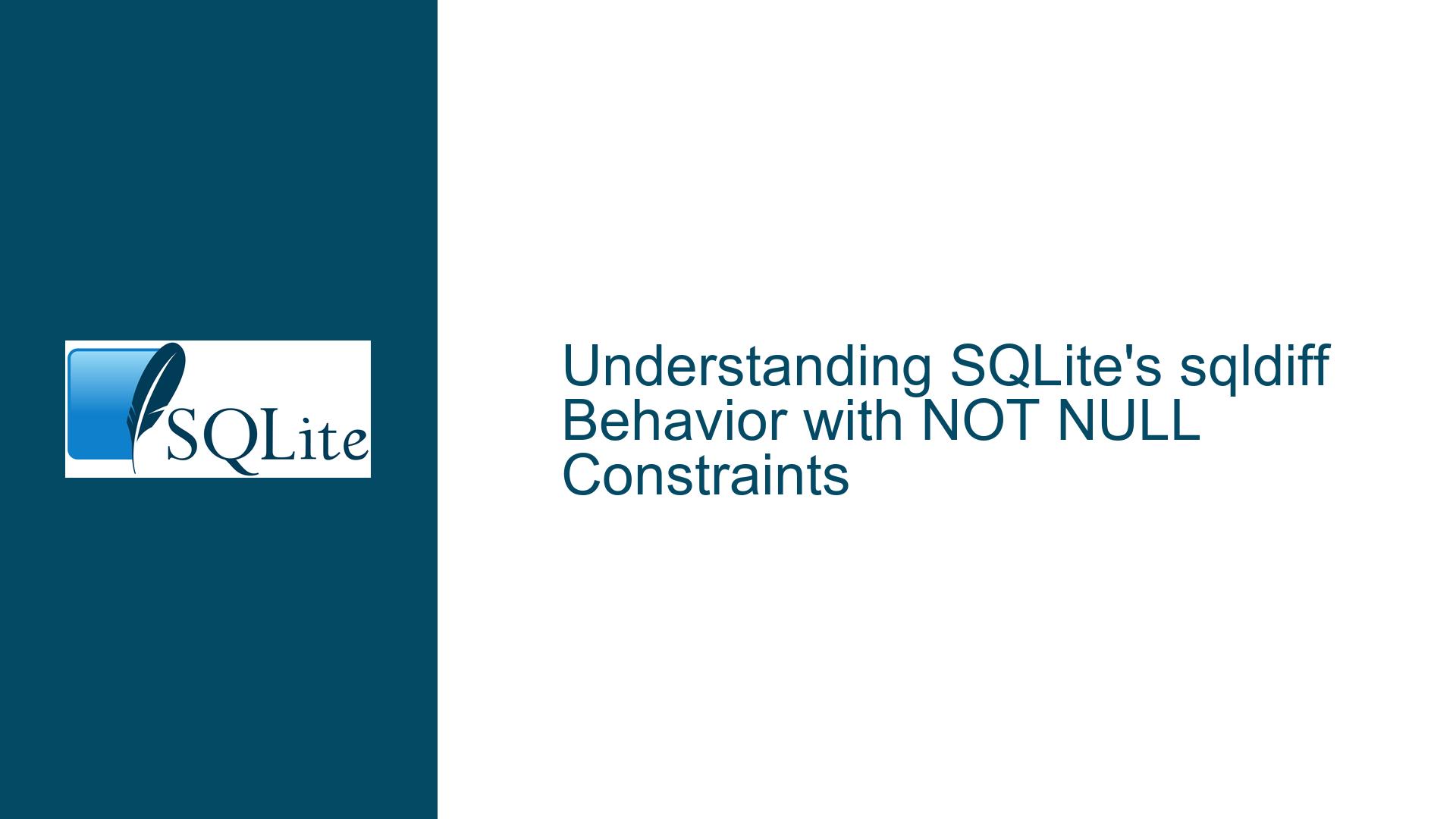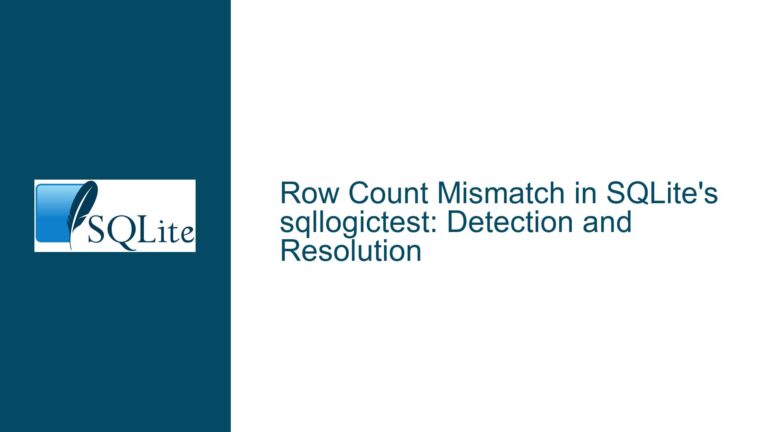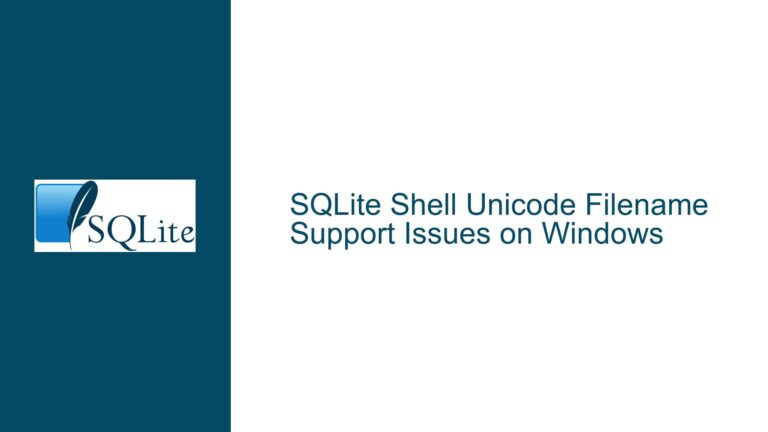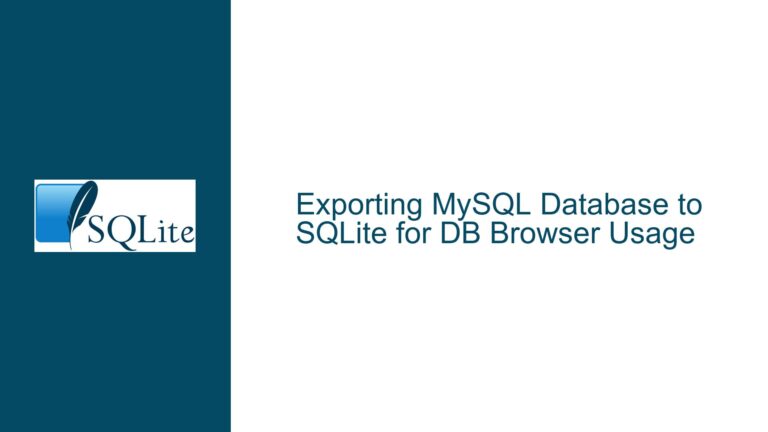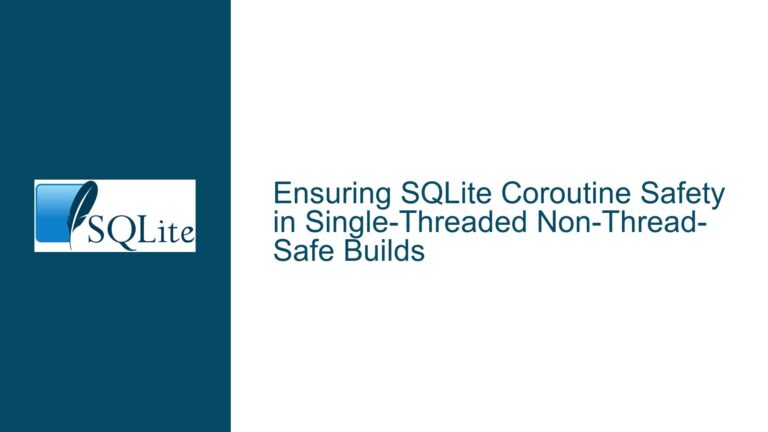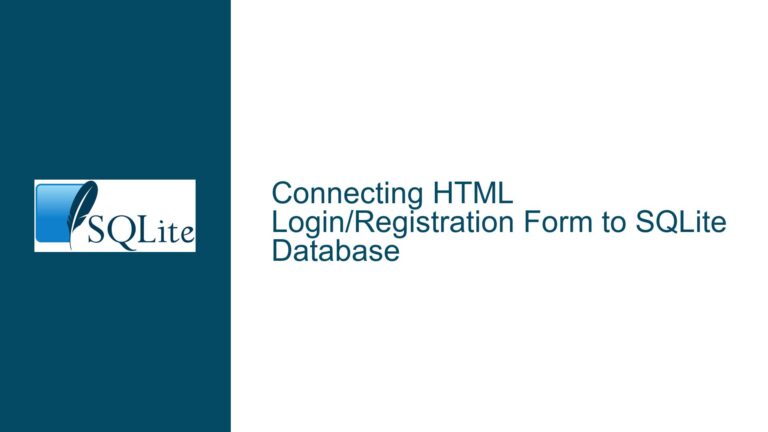SQLite’s sqldiff Behavior with NOT NULL Constraints
Issue Overview: sqldiff’s Handling of NOT NULL Constraints in Schema Comparisons
The core issue revolves around the behavior of SQLite’s sqldiff utility when comparing schemas between two databases, specifically focusing on the detection of differences in NOT NULL constraints. The sqldiff tool is designed to identify discrepancies in both schema and content between two SQLite databases. However, as highlighted in the discussion, sqldiff does not flag differences in NOT NULL constraints when comparing schemas, even when the --schema flag is used to restrict the comparison to schema differences only.
To illustrate the problem, consider two databases: not_null.db and null.db. The not_null.db database contains a table groups with a column name defined as TEXT NOT NULL, while the null.db database has the same table groups but with the name column defined simply as TEXT (without the NOT NULL constraint). When running sqldiff --schema not_null.db null.db, the tool does not report any differences, despite the clear discrepancy in the NOT NULL constraint.
This behavior raises questions about the intended functionality of sqldiff. Is it expected that sqldiff should ignore NOT NULL constraints when comparing schemas, or is this a bug that needs to be addressed? The discussion suggests that this behavior is not explicitly documented, leading to confusion among users who rely on sqldiff for schema comparisons.
Possible Causes: Why sqldiff Ignores NOT NULL Constraints
The discussion provides insights into why sqldiff might not detect NOT NULL constraints during schema comparisons. One key point is that sqldiff is primarily designed to compare the content of databases, not their schemas. The tool’s documentation emphasizes that it is a utility for computing differences in content between two SQLite databases. This focus on content rather than schema could explain why sqldiff does not flag differences in NOT NULL constraints, as these constraints are part of the schema definition rather than the content itself.
Another factor is the limited scope of the --schema flag. While the --schema flag is intended to restrict the comparison to schema differences, it does not provide a comprehensive schema comparison. The flag only ensures that the tool compares the structure of the databases (e.g., table names, column names, and column order) but does not delve into the finer details of schema definitions, such as NOT NULL constraints, default values, or foreign key relationships.
Additionally, the discussion mentions that sqldiff only insists that like-named tables have matching column names (ignoring case) and column order to be considered content-comparable. This narrow focus on column names and order further limits the tool’s ability to detect more nuanced schema differences, such as NOT NULL constraints.
Finally, the discussion highlights that the sqldiff utility has been modified to allow for more comprehensive schema comparisons via the --table sqlite_schema option. This suggests that the original implementation of sqldiff was not designed to handle detailed schema comparisons, and the addition of the --table sqlite_schema option is a step toward addressing this limitation.
Troubleshooting Steps, Solutions & Fixes: Addressing sqldiff’s Limitations with NOT NULL Constraints
To address the issue of sqldiff not detecting NOT NULL constraints during schema comparisons, several steps can be taken. These steps include understanding the tool’s limitations, exploring alternative methods for schema comparison, and leveraging the latest updates to sqldiff for more comprehensive schema analysis.
1. Understanding the Limitations of sqldiff:
The first step in troubleshooting this issue is to recognize the inherent limitations of sqldiff. As discussed, sqldiff is primarily designed for content comparison, and its schema comparison capabilities are limited. Users should be aware that sqldiff may not detect all schema differences, especially those related to constraints like NOT NULL, default values, or foreign keys. This understanding can help set realistic expectations when using the tool for schema comparisons.
2. Exploring Alternative Methods for Schema Comparison:
Given the limitations of sqldiff, users may need to explore alternative methods for comparing database schemas. One approach is to manually inspect the schema definitions using SQL commands. For example, the PRAGMA table_info(table_name) command can be used to retrieve detailed information about a table’s columns, including whether they have NOT NULL constraints. By running this command on both databases and comparing the results, users can identify discrepancies in NOT NULL constraints.
Another approach is to use third-party tools or scripts designed for schema comparison. These tools often provide more comprehensive schema analysis capabilities, including the detection of NOT NULL constraints, default values, and other schema attributes. While these tools may require additional setup or licensing, they can offer a more robust solution for users who need detailed schema comparisons.
3. Leveraging the Latest Updates to sqldiff:
The discussion mentions that the sqldiff utility has been updated to allow for more comprehensive schema comparisons via the --table sqlite_schema option. This option enables users to compare the sqlite_schema table between two databases, which contains the schema definitions for all tables, indexes, and other database objects. By using this option, users can obtain a more detailed comparison of the schema, including NOT NULL constraints.
To use the --table sqlite_schema option, users should update to the latest version of SQLite that includes this feature. Once updated, they can run sqldiff with the --table sqlite_schema option to compare the schema definitions between two databases. For example:
sqldiff --table sqlite_schema not_null.db null.db
This command will compare the sqlite_schema table between not_null.db and null.db, providing a more comprehensive analysis of schema differences, including NOT NULL constraints.
4. Reporting Bugs and Requesting Enhancements:
If users encounter issues with sqldiff that are not addressed by the latest updates, they can report bugs or request enhancements through the SQLite project’s official channels. The SQLite project maintains a bug tracking system and a mailing list where users can submit bug reports, feature requests, and other feedback. By reporting issues and providing detailed examples, users can contribute to the ongoing improvement of sqldiff and other SQLite tools.
5. Implementing Custom Schema Comparison Scripts:
For users with specific schema comparison needs, implementing custom scripts may be a viable solution. These scripts can be written in a programming language like Python, using SQLite’s API to retrieve and compare schema information. Custom scripts can be tailored to detect specific schema differences, such as NOT NULL constraints, and can be integrated into automated testing or deployment pipelines.
For example, a Python script could use the sqlite3 module to connect to both databases, retrieve the schema definitions using PRAGMA table_info, and compare the results to identify discrepancies in NOT NULL constraints. This approach provides flexibility and control over the comparison process, allowing users to address specific requirements that may not be met by existing tools.
6. Educating the Community and Sharing Best Practices:
Finally, users can contribute to the broader SQLite community by sharing their experiences, best practices, and solutions for schema comparison. By documenting their findings and sharing them through forums, blogs, or other channels, users can help others navigate similar challenges and improve their use of SQLite tools. This collaborative approach can lead to the development of new tools, techniques, and resources that benefit the entire SQLite community.
In conclusion, while sqldiff is a valuable tool for comparing SQLite databases, its limitations in detecting NOT NULL constraints and other schema differences should be understood and addressed. By exploring alternative methods, leveraging the latest updates, and contributing to the community, users can overcome these limitations and ensure accurate and comprehensive schema comparisons.
